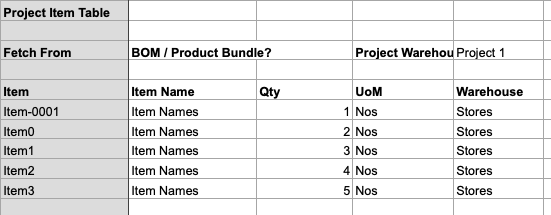@umair, I understood your idea, and it looks great, but, in many of these types of companies, they have also the concept of “Work Orders” that are exactly what you are describing, but, involves the consumption of “Raw Materials” against a service and allowing to manage “Work Orders” for “Services” to do.
As the way, the actual Work Orders are designed, I believe, it will make more sense, continue improving the “Work Orders” to allow consume materials and produce a service
The major difference in this case, is that a Task will be required against the work order, and will have the same effect you are describing in terms of information, but on terms of accounting, will be much more clear, register against an specific service this consumption.
Also, this have a direct correlation with Asset Capitalization, on (telecom, energy, water and gas distribution), you offer a service for your customer, but 90% of the time, you will need to extend your network to reach the place of your customer.
To extend the network, you will need lots of raw materails and labor, labor are always registered against tasks, but the raw materials, should be registered against a service, to determine the “Valuation of the Service” and “Capitalization of Assets”.
For example, lets take the scenario I’m a water distributor and I’m going to make an installation to a new customer.
I’ll need to find the leaf of water supply network, that close the the place of the customer, let’s suppose this leaf is 100 meters from the place of the customer.
In that scenario, I’ll need
110 meters of pipes
1 hidrometer
This are the BOM elements of my “Water Supply Installation” service
So, I’ll generate a Work Order for someone go and install the service (this WO is related to an task)
At the finalization of the Work Order (there’s no Item issued in stock, since it have gone against a service), so I’ll register this cost against the project and task.
At the same time, I’ll need to register the raw materials, in “Asset Captialization” because, I do have consumed the materials, to expand my network (that is my active asset).
With the installation completed, I can start offering the service of “Water Supply” for my customer.
Keep in mind, that for some cases, I can bill the “Water Supply Installation” for the customer too, and in that case, I can just enable the “Billing” on the task, and bill the labor and materials.
On that case it will represent an direct profit for me, since my assets are “Capitalized”, my cost of materials consumed, will be virtualized to zero.
This scenario, is really simple, but some installations, can have options also, like in gas:
First there’s a team, that need to dig the pipes passage.
Second there’s a team, that solder distribution points.
Third there’s a team that connect customers.
All these operations can occur in a single work order, for the construction of a project, in different times.
